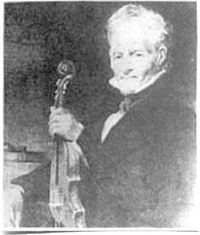Annotation:Jet black haired youth (The)
Back to Jet black haired youth (The)
JET BLACK HAIRED YOUTH, THE (An gille dubh ciar-dhubh). Scottish, Slow Air (3/4 time, 'A', 'B', and 'D' parts; 2/4 time, 'C' part). D Major. Standard tuning (fiddle). ABCD. "Of this air the editor has heard many imperfect sets; it is given in this work as sung by the gentlemen alluded to in the prospectus. The Gaelic words are well known, which renders the matter attainable" [Fraser, 1816]. Although Fraser's stated aim was to contribute to a "restoration of simplicity of taste" to Scottish tunes, his "sets did not look simple to the antiquary Stenhouse, who criticized several of Fraser's versions in 'Illustrations of the Lyric Poetry and Music of Scotland:
In Captain Fraser's Gaelic Airs, lately published, a set of this tune [An Gilleadh dubh] appears in two strains leaded with trills, crescendos, diminuendos, cadences (i.e. cadenzas) ad libitum, and other modern Italian graces. This gentleman professes, however, to give the airs in their ancient and native purity, but ex uno disce omnes! ... (Alburger, 1983).

Stenhouse was not the only one to criticize Simon Fraser (1773-1852) of Knockie, who was described by a "Miss Maria H. Grant in one of her charming novels [when she] alludes to one of the pleasures of life at Invermoriston, consisting of the frequent visits paid to and received from Knockie while tenanted by a worthy but tedious soldier, now deceased, known as the "Great Bore," the mutual invitations being through smoke raised by the lighting of fires on particular eminences" [quoted from an article by Marie Fraser of Canada, "Glenmoriston vs. Lovat"]. However Fraser impressed a contemporary, Captain MacDiarmid, who remarked, "I have never heard anyone make the fiddle speak Gaelic so beautifully."
Source for notated version:
Printed sources: Fraser (The Airs and Melodies Peculiar to the Highlands of Scotland and the Isles), 1816; No. 70, p. 25.
Recorded sources:
Back to Jet black haired youth (The)
